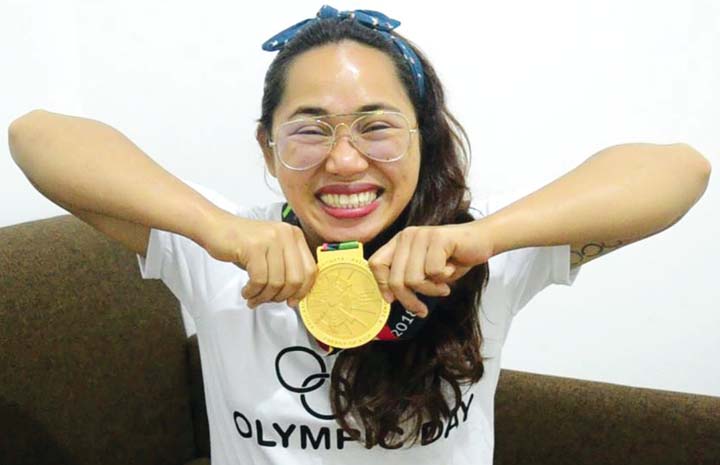
The Population Commission (Popcom) on Tuesday said the historic triumph of Hidilyn Diaz in the Tokyo Olympic games could boost efforts to educate the youth about teenage pregnancy.
Undersecretary for Population and Development Juan Antonio Perez III, who heads the Commission on Population and Development (Popcom), told the BusinessMirror that “Hidilyn and other women athletes can be positive role models for adolescents and the youth in general who have aspirations for their future roles in society. Given the opportunity we would tap them [women athletes] in our campaigns.”
The Philippine Olympics team is composed of 19 athletes, 10 of whom are women. Two of these athletes, Diaz and Elreen Ando are competed in weightlifting.
The other athletes are Irish Magno and Nesthy Petecio who are competing in boxing; Margielyn Didal, skateboarding; Kiyomi Watanabe in judo; Kristina Knott, athletics; Yuka Saso and Bianca Pagdanganan in golf; and Remedy Rule in swimming.
Perez said, however, that beyond excellent role models, young women could avoid teenage pregnancy by focusing on their education. Efforts to improve basic education can help achieve this end.
“I think the focus of primary education is academic learning and not enough about careers and role models. This is an area of basic education that could be strengthened and have positive knock on effects on teen pregnancy,” Perez said.
The Popcom chief also emphasized the importance of keeping communication lines within families. It recently launched the Konektado Tayo campaign, which aims to bridge the communications gap between Filipino parents and their adolescent children, particularly those concerning adolescent sexuality and development.
The campaign will use Facebook as the primary platform to reach target audiences and help improve the quality of conversations about love, sexuality and relationships.
Official government data showed babies born to adolescent mothers, or those younger than 20 years old, reached 180,916 and was more than three times of babies sired by adolescent fathers at 52,734 based on the 2019 births statistics only released in January 2021.
The Philippine Statistics Authority (PSA) data also showed that “high-risk” age of pregnancy covering the age group 17 years old and younger accounted for 3.7 percent of births and, notably, 35 years old and over accounting for 15.8 percent.
Childbearing in these age groups, PSA said, is more likely to have complications during pregnancy and labor that may result in higher morbidity and mortality to both mother and child.
About 10.7 percent of the births in 2019 were to mothers aged between 15 to 19 years old, while around 16 percent were to mothers 35 years old and over. Moreover, the adolescent birth rate, or the number of births to women ages 15 and 19 per 1,000 women in that age group, was 34 per 1,000 women in 2019.
The career and financial stability goals of women become more complicated with the birth of a child, especially when a child is born out of wedlock. Nearly a million or 917,242 births, representing 54.8 percent of all births in 2019, included children are illegitimate.

